Warning: This post contains minor spoilers for the film Just Mercy.
“The best criticism of the bad is the practice of the better.” – Richard Rohr
How do you change a person’s mind?
We live in a polarized age that seems to grow more and more divided as the months and years pass. Even when tectonic events happen in our society, like the Ferguson Uprising or the Sandy Hook massacre, we still manage to hold the line in our ideological trenches, failing to cross the No Man’s Land to have even a conversation with those on the opposing side.
Our political leaders spend their time designing maneuvers not to persuade but to invalidate and render powerless the opposition. Our faith leaders seem to spend much of their time crafting critiques of their ideological enemies for the consumption of Twitter followers and podcast listeners. We reward with our likes and downloads not the most persuasive among us, but the most divisive. Conflict brings attention and attention is the currency of our time.
With all this energy expended, we have to wonder – do the battle lines themselves ever change? Or do they only calcify?
How do you change a person’s mind?
Last week, I finally had the chance to see the film Just Mercy. Before I get to my own reflections, let me start by telling you that Just Mercy is a powerfully affecting movie experience. I cried multiple times and left the theater staggering a bit under the weight of what I had just seen. Among many memorable scenes, there is a death row execution in the movie that will stick with me, particularly because of a haunting audio recording of an old hymn that plays over the top of it. Yet, the movie also provides several moments of levity and is well-paced which keeps it from sinking into despair and joining the ranks of painful list of movies that I’d be glad to tell people I’d seen but never plan to watch again.
Just Mercy will be worth multiple viewings as it is, at its heart, a character story. The film’s core is a steady stream of small development moments – conversations happening through the walls on death row, drives through the sharply contrasted neighborhoods of rural Alabama, arguments held in the visiting area of the prison.
Even Michael B. Jordan’s solid performance as Bryan Stevenson functions primarily as a fulcrum around which other characters grow and change. Stevenson listens while his assistant, Eva Ansley (Brie Larson), smokes a cigarette and contemplates the strength of her convictions in light of the danger to her family. He listens while convicted murderer Walter McMillian (Jamie Foxx) moves from a burned skeptic to a grateful co-conspirator to, finally, a hope-filled encourager, lifting Stevenson back up after their initial failure to convince a judge to grant McMillian a new trial.
Speaking of Walter McMillian, I genuinely believe Jamie Foxx deserved a Best Supporting Actor Oscar nomination for his performance. Whether he is clouded in anger from his seemingly hopeless plight or grasping at straws to encourage one of his death row neighbors, Foxx’s emotional range is vast and palpable. I don’t think I have ever felt the level of catharsis in a movie theater as I did in the film’s final resolution scene.
The other relational highlight for me from Just Mercy happened between Stevenson and Tommy Chapman, the loathsome District Attorney played convincingly by Rafe Spall. Chapman, a white Southerner perhaps ten years older than Stevenson, is smarmy and condescending, surpassing even the open vitriol of Sheriff Tate. As District Attorney, he lives and works in Monroeville, the county where Harper Lee wrote To Kill a Mockingbird. His suggestion, early on in the film, for Stevenson to check out the “Mockingbird Museum,” (“one of the most significant civil rights landmarks in the south”) on his way out of town is dripping with contempt, particularly as it comes after Chapman’s flat rejection to give Stevenson any help in re-opening McMillian’s case. This rejection has contained within it every ounce of Chapman’s greater refusal to even entertain the thoughts of a black, Harvard-educated attorney from the North in what he believes to be a settled matter in his Alabama county.
As the movie progresses, this relationship becomes the crucial turning point of the story. After Stevenson fails to convince Chapman of the need to reconsider the evidence in their first meeting, he shows up at Chapman’s house to plead with him to consider being on the side of justice, even if it costs him his reputation. You can sense the weight on Chapman’s mind but, once again, he refuses to engage the conversation and boots Stevenson off his property.
At the film’s zenith, a courtroom showdown between Chapman and Stevenson, the weight becomes too much to bear. As Stevenson asks for the Circuit Court to dismiss all charges, the judge asks for Chapman as the District Attorney to represent the opposing arguments. His painful silence is followed finally by a decision to join the defense in asking for the charges to be dropped.
Even having read Just Mercy when it came out a few years ago, this scene moved me, certainly because of the actors’ performances, but perhaps more so because of the nature of the victory. Michael B. Jordan’s Stevenson certainly gives an Atticus-Finch-level speech to set up the scene but, in the end, he doesn’t beat Chapman by the force of compelling courtroom rhetoric. He doesn’t exactly “win” at all; he convinces his opponent to forfeit, to pay the price of losing a very public case in order to remove the moral weight from his shoulders.
Why does this work? Why does Tommy Chapman – who, by the way, was re-elected three additional times after McMillian’s exoneration in 1993, finally retiring in 2012 – change his mind about his need to hang the murder of a teenage white girl in rural Alabama on the head of Walter McMillian, a black man sitting on Death Row awaiting execution?
How do you change a person’s mind?
Bryan Stevenson, like Martin Luther King, Jr. before him, managed to do so through the practice of prophetic persuasion, the public embodiment of a value so completely that it compels enough cognitive dissonance in the observer to allow them to consider that they might actually be in the wrong in a given situation. This practice includes speaking boldly but words are a mere accompaniment to and interpretation of clear and effective action. It is an argument for the heart, not simply the mind.
Contrary to much of how we think about ourselves as rational creatures, our minds actually tend to follow our bodies and hearts. As James K.A. Smith writes, “We learn to love, then, not primarily by acquiring information about what we should love but rather through practices that form the habits of how we love[1].” Our worldview may be reinforced by the intake of information but it is changed by practice, by the embodiment of previously unseen realities. In some sense, it is the body that changes the mind – both our own minds and the minds of those observing.
Prophetic persuasion practices that which it preaches even before it begins to preach. It incarnates into the world, letting the mouth bear witness to what the body has already practiced. We love in action and let our words offer the interpretation of that action.
This is not an excuse from speaking; despite what St. Francis probably never said, words are always necessary. Rather, it is a call to put a thumb on the precise scale our age is most tempted to neglect – that of quiet, sacrificial action not intended for Insta stories or Twitter likes. It is a call to allow our words to come only when our bodies and our bank accounts are already on the line. It is to preach a lived word instead of a theoretical one. It is to exit the clean offices and kitchen tables of our minds and enter the messy world on our hands and knees, praying and working for the world yet to come.
This is the power of Bryan Stevenson and others like him today – his talk shines through with the light of his walk. He speaks, even as some said of Jesus in his day, as one with authority. I want the same to be true in my life and in my generation as a whole.
May the words we speak, tweet, and share come from the deeper well of a heart transformed by experiences lived and sacrifices made.
May our revolutions be embodied before they are ever televised.
May our persuasiveness be the fruit borne by seeds planted in struggle and watered by our own tears, sweat, and blood.
May the first mind we change, even if it is the only mind we change, be our own.
[1] James K.A. Smith, You Are What You Love, p. 21
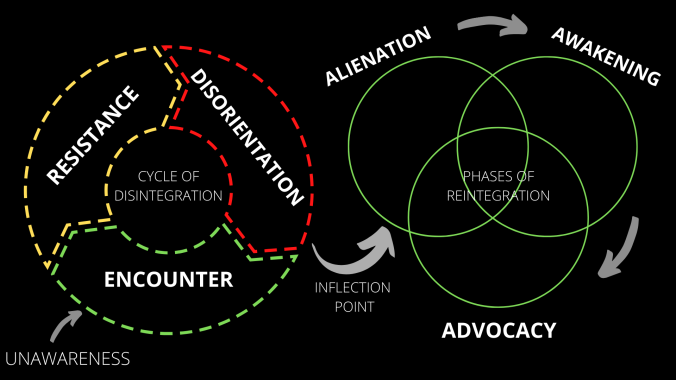

 Sometimes these women are mistreated horribly and, even if they tell someone about it, no one will believe them. Or worse, the people in charge (usually men) will blame these women for causing the trouble in the first place.
Sometimes these women are mistreated horribly and, even if they tell someone about it, no one will believe them. Or worse, the people in charge (usually men) will blame these women for causing the trouble in the first place.

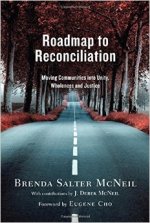 Roadmap to Reconciliation by Brenda Salter-McNeil
Roadmap to Reconciliation by Brenda Salter-McNeil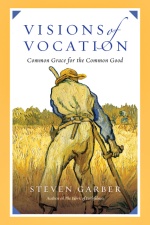 Visions of Vocation by Steven Garber
Visions of Vocation by Steven Garber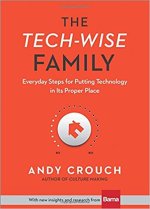
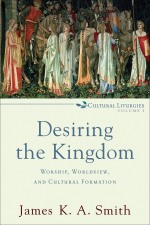
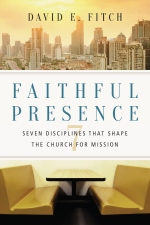
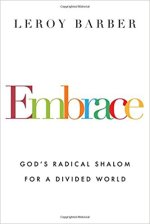 Embrace by Leroy Barber
Embrace by Leroy Barber A Failure of Nerve by Edwin Friedman
A Failure of Nerve by Edwin Friedman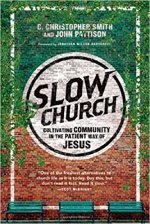 Slow Church by C. Christopher Smith & John Pattison
Slow Church by C. Christopher Smith & John Pattison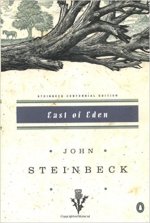 East of Eden by John Steinbeck
East of Eden by John Steinbeck The Book of the Dun Cow by Walter Wangerin, Jr.
The Book of the Dun Cow by Walter Wangerin, Jr.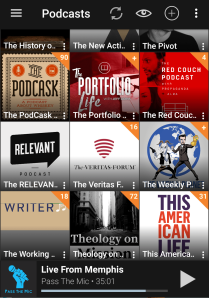 I like to think of myself as a refined and intelligent consumer and I want my listening to reflect that in case I need to impress someone riding in the car with me. My podcast subscriptions fall mostly in the categories of news, cultural commentary, interviews with interesting people, and deep dives into topics that intrigue me (most recently, theoretical physics – impressive, right?). But, one podcast icon stands out from among the rest. It’s one I probably wouldn’t play to impress someone in the car and the one I most look forward to each week.
I like to think of myself as a refined and intelligent consumer and I want my listening to reflect that in case I need to impress someone riding in the car with me. My podcast subscriptions fall mostly in the categories of news, cultural commentary, interviews with interesting people, and deep dives into topics that intrigue me (most recently, theoretical physics – impressive, right?). But, one podcast icon stands out from among the rest. It’s one I probably wouldn’t play to impress someone in the car and the one I most look forward to each week.
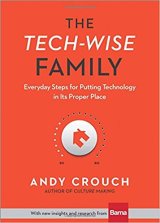
 Sprinkled throughout the book are findings from a recent massive Barna survey of parents and kids about the use of technology in the home. At the end of each chapter, Crouch gives a “Reality Check,” where he shares where his own family has succeeded and struggled (often both) with each of the ten commitments. Between Crouch’s heartfelt stories, the practicality of each of the ten steps, and the large-scale findings of the Barna survey, this fast-reading book feels like the exact right tool to give to parents, would-be parents, and anyone else who fears their devices are beginning to (or long ago managed to) encroach upon their relationships.
Sprinkled throughout the book are findings from a recent massive Barna survey of parents and kids about the use of technology in the home. At the end of each chapter, Crouch gives a “Reality Check,” where he shares where his own family has succeeded and struggled (often both) with each of the ten commitments. Between Crouch’s heartfelt stories, the practicality of each of the ten steps, and the large-scale findings of the Barna survey, this fast-reading book feels like the exact right tool to give to parents, would-be parents, and anyone else who fears their devices are beginning to (or long ago managed to) encroach upon their relationships.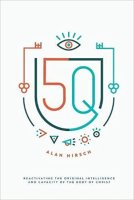 5Q: Reactivating the Original Intelligence and Capacity of the Body of Christ by Alan Hirsch. 100M (April 2017, 216 pp).
5Q: Reactivating the Original Intelligence and Capacity of the Body of Christ by Alan Hirsch. 100M (April 2017, 216 pp).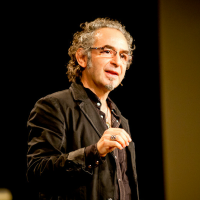
 The Transferable:
The Transferable: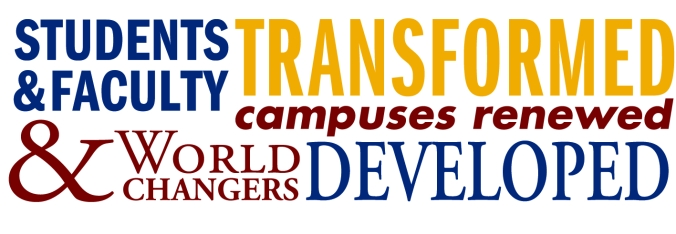 A few weeks before I turned 22 years old, I drove to Westport Plaza, a business park just northwest of Saint Louis, to interview for a full-time position with InterVarsity Christian Fellowship. I had spent the previous year as an intern with the organization, which included a six-week stint living with Sudanese refugees in Cairo, Egypt. I had led a freshmen Bible study, run some leadership meetings, and spent every Sunday night with other interns and young staff in Saint Louis, learning how to be an adult and fighting to survive the first year of ministry together.
A few weeks before I turned 22 years old, I drove to Westport Plaza, a business park just northwest of Saint Louis, to interview for a full-time position with InterVarsity Christian Fellowship. I had spent the previous year as an intern with the organization, which included a six-week stint living with Sudanese refugees in Cairo, Egypt. I had led a freshmen Bible study, run some leadership meetings, and spent every Sunday night with other interns and young staff in Saint Louis, learning how to be an adult and fighting to survive the first year of ministry together.